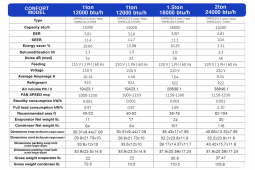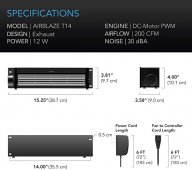@richard cabesa I'm inclined not to do it but still open if my power generation calculations show I'm not able to meet my project requirements without the extra juice. Still things to sort out.
@Zwy yep, saw that video and a few others. That's where I got my impression of the unit. For a specialized installation with narrow (read: not ambitious) cooling requirements and speed of installation (which costs money, too, especially if outfitting a fleet), it's worth the cash. I just don't see it being useful or cost effective in RVs and trailers. The capacity is too low and the price is still too high for what you get. Moreover, would 2000W/6,824 BTU be enough to handle the current heat wave even in just a van?
Sitting here I see that I overlooked one place I could put a cassette. I assumed it would be too small but perhaps not: right above the door.
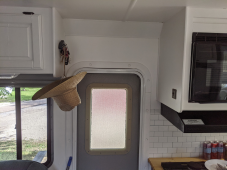
The available width is 30" and the available height is 10" and that could be stretched to 13" by mounting the cassette away from the sloped wall. The
Senville high-efficiency 9k BTU unit cassette dimensions are 28.43x7.36x11.42. The
Senville ultra high-efficiency 9k BTU unit cassette dimensions are 31.57x7.44x11.69. If I go with the ultra high-efficiency unit, there's a bit of space on either side by cutting holes into the cabinets. Far less work and expense than going with a roof unit and it might be an easy way to support the unit, to boot.
The high-efficiency 9k BTU unit is $800 with 25ft of tubing and offers 19 SEER, -15C / 5F. I'm just interested in cooling, though, because I have a
Webasto heater connected to my main gasoline fuel tank for the heating; paid $600 and it was shipped from Russia. The ultra-high efficiency 9k BTU unit is $1050 with 25ft of tubing and offers 25 SEER, -30C / -22F.
Goes to show you: don't make assumptions.
It looks like this will work without the trouble and expense of a ceiling mounted unit! I'm excited. Thanks again
@Generis for spurring this investigation!
The next issue is moving the air from the door/eating area to the bedroom. That could be accomplished with the
OPolar fans @Generis uses and mounting one just above the microwave:
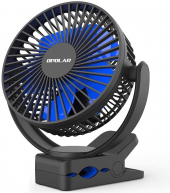

I have a privacy curtain where he places his fans so that exact location isn't an option for me. Another possible location is below the cabinet to the left of the door and to the right of the light.
However, since there is already power to the ceiling, mounting a low-profile blower to the ceiling might work, too, if it's quiet.
This one runs on DC (I'd probably have to run a new DC cable):
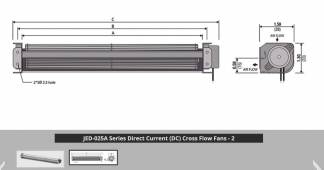 This one
This one has the the motor in the middle; he claims it's quiet but not very efficient with the single-pole motor and doesn't push much air. Still, a tangential fan might be perfect for my purpose. These are used in the cassettes, after all, and they seem to blow just fine and quietly, in my experience.

Diagram is from this
informative article on tangential blowers.
Pretty ugly, though. Clearly needs some sort of cover since these are intended for industrial or concealed applications. After 30 minutes of searching it wasn't until I started looking for "air curtain fans" I started to see domestic products that might work.
Vornado Transom Window Fan with Remote Control (AC) ($99, June 2021) No new wiring needed.
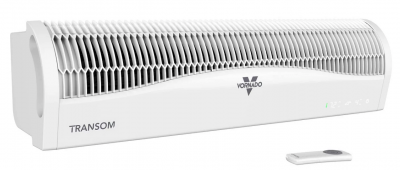
Ha! For the ultimate in low-profile, there is
this Sanus 12VDC rack-mounted fan ($109):

Following that thread,
this one ($119) is just 0.5" taller than my current a/c unit, though it does have sharp corners that would be a problem for people 6'1" or taller, by my estimation:

Ok, I'm pretty sure I can find something that will move the air around.
I'm still going to run through the calculations but Generis has already proven that a SEER 19 heat pump and ~1kW of solar panels is workable under normal conditions. My guess is that even during a heat wave like we are currently experiencing the heat pump duty cycle would just be higher but completely capable of handling it.

www.nomadiccooling.com















